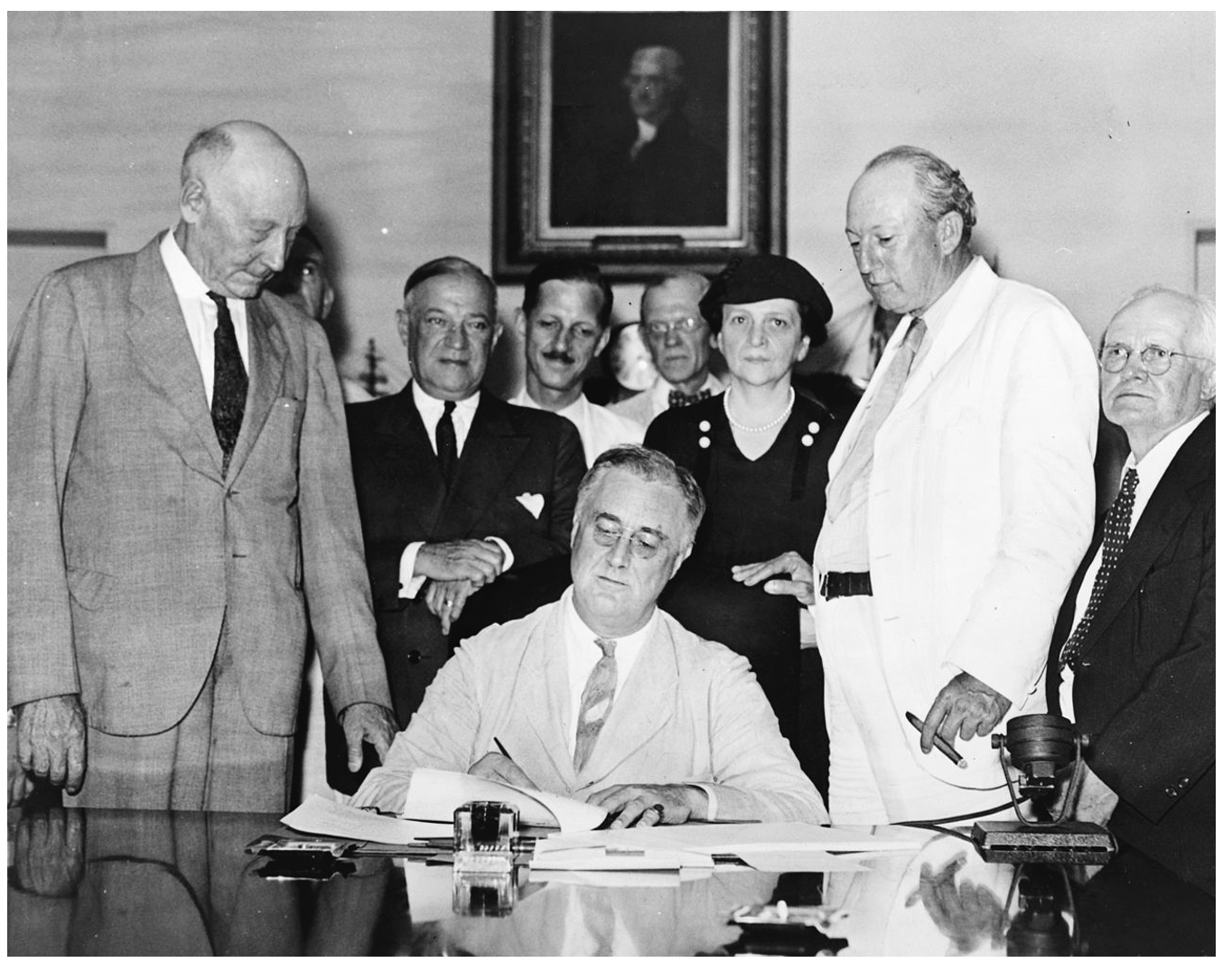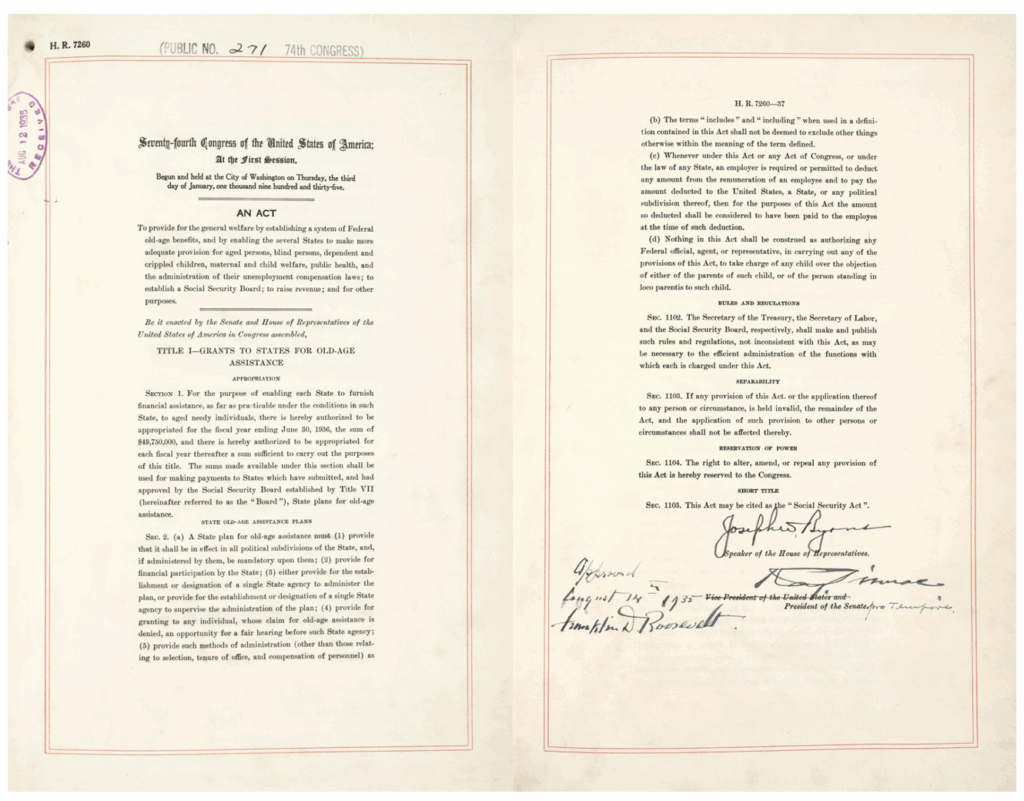This August marks the 90th anniversary of the Social Security Act – a landmark piece of legislation that reshaped the relationship between the American government and its citizens. Signed into law by President Franklin D. Roosevelt (FDR) on August 14, 1935, in the depths of the Great Depression, the Social Security Act was a bold response to widespread poverty, unemployment, and economic uncertainty.
The president read a short statement at the signing of the act. “We can never insure one hundred percent of the population against one hundred percent of the hazards and vicissitudes of life,” he observed. “But we have tried to frame a law which will give some measure of protections to the average citizen and to his family against the loss of a job and against poverty-ridden old age.”

President Franklin D. Roosevelt signing the Social Security Act on August 14, 1935. (Pictorial Press)
A Response to Crisis
The Social Security Act didn’t arise in a vacuum. The Great Depression, a worldwide economic downturn that began in 1929 and lasted until about 1939, left millions of Americans out of work and without a safety net. Elderly citizens, many of whom had no pension or savings, were particularly vulnerable. In this environment, FDR proposed a sweeping new vision: the federal government could play a central role in protecting Americans from the worst economic hardships. For the first time, the federal government took a broad, proactive role in promoting financial stability and protecting individuals against the uncertainties of life. The original law established:
- Old-age benefits for retired workers
- Unemployment insurance
- Aid for dependent children and the disabled
Though modest by today’s standards, these provisions were groundbreaking for their time and laid the foundation for a system that continues to support millions of people today. Over the past nine decades, it has grown into a foundational part of American life.
 After FDR signed the Social Security Act document, shown here, he called it “a cornerstone in a structure which is being built, but which is by no means complete.” (National Archives and Records Administration)
After FDR signed the Social Security Act document, shown here, he called it “a cornerstone in a structure which is being built, but which is by no means complete.” (National Archives and Records Administration)
Evolving Over Time
What began as a narrow set of protections has steadily expanded. Social Security has been amended many times to reflect changing demographics, economic conditions, and political priorities. Among the major milestones:
- 1956: Disability benefits were added through the Social Security Disability Insurance (SSDI) program.
- 1965: Medicare and Medicaid were established, offering health coverage to elderly and low-income individuals, respectively. (Read about Medicaid’s recent 60th anniversary here.)
- 1974: The Supplemental Security Income (SSI) program began operations, providing an income for people with limited resources, including those who are elderly, blind, or disabled.
- 1983: Reforms addressed funding issues and extended Social Security’s solvency.
Today, Social Security provides monthly benefits to over 74 million people, including retirees, disabled workers, and surviving family members. For many, it’s the primary source of income in retirement.
The Future of America’s Social Contract
Even after 90 years, Social Security remains as relevant as ever. Americans today live longer, and fewer have access to traditional pensions. For workers, Social Security offers a measure of financial stability during retirement or in the event of disability. For families, it helps cushion the blow of unexpected loss.
Beyond dollars and cents, the program represents a broader idea – that society has a role to play in caring for its most vulnerable members. It’s a legacy of shared responsibility that has endured across generations. Social Security remains one of the most popular and widely supported government programs in the United States: a 2024 Pew Research Center survey found that 79% of U.S. adults believe Social Security benefits should not be reduced.
As the population ages and economic pressures evolve, however, Social Security faces real challenges. Policymakers continue to debate how best to strengthen the program for the future, which may include adjusting payroll taxes, raising the retirement age, or modifying benefits. The choices won’t be easy, but with thoughtful leadership and a shared commitment to economic dignity, Social Security can continue doing what it was designed to do: provide a foundation of economic security in uncertain times.







